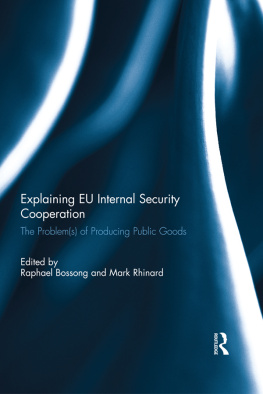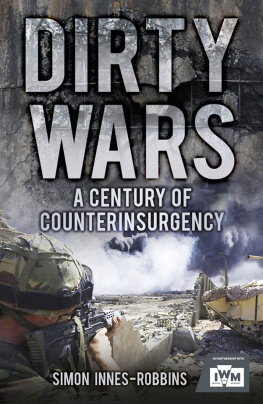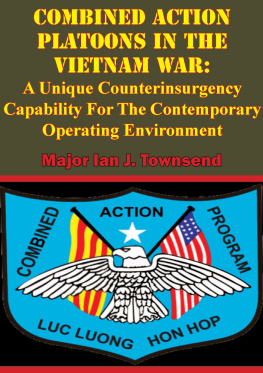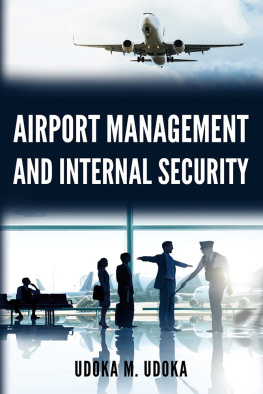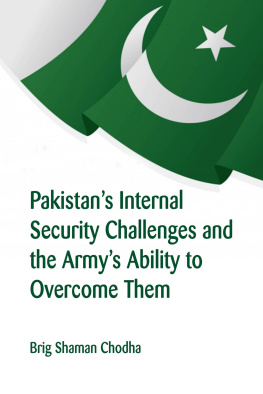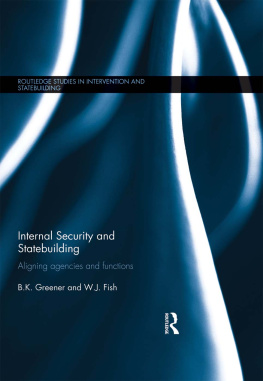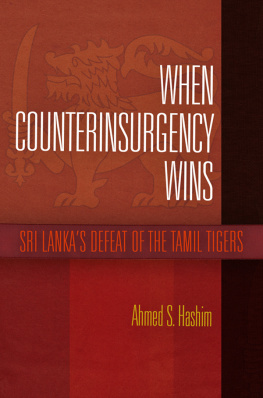The Future of
Counterinsurgency
Contemporary Debates in Internal
Security Strategy
LAWRENCE E. CLINE AND
PAUL SHEMELLA, EDITORS
Praeger Security International

Copyright 2015 by Lawrence E. Cline and Paul Shemella
All rights reserved. No part of this publication may be reproduced, stored in a retrieval system, or transmitted, in any form or by any means, electronic, mechanical, photocopying, recording, or otherwise, except for the inclusion of brief quotations in a review, without prior permission in writing from the publisher.
Library of Congress Cataloging-in-Publication Data
The future of counterinsurgency : contemporary debates in internal security strategy / Lawrence E. Cline and Paul Shemella, editors.
pages cm
Includes bibliographical references and index.
ISBN 9781440832994 (hardcopy : alk. paper) ISBN 978-1440833007 (ebook)
1. Counterinsurgency. 2. Internal security. 3. TerrorismPrevention. I. Cline, Lawrence E., editor of compilation. II. Shemella, Paul, 1950 editor of compilation.
U241.F872015
355.0218dc232015012993
ISBN: 9781440832994
EISBN: 9781440833007
191817161512345
This book is also available on the World Wide Web as an eBook.
Visit www.abc-clio.com for details.
Praeger
An Imprint of ABC-CLIO, LLC
ABC-CLIO, LLC
130 Cremona Drive, P.O. Box 1911
Santa Barbara, California 93116-1911
This book is printed on acid-free paper 
Manufactured in the United States of America
Contents
Lawrence E. Cline
Thomas R. Mockaitis
Paul Shemella
Paul Clarke
Christopher Jasparro
Colin P. Clarke
Lawrence E. Cline
Paul Clarke
David A. Charters
Lawrence E. Cline
Robert Springborg
Sharad Joshi, Gretchen Peters, and Phil Williams
Colin P. Clarke and Phil Williams
Introduction
Lawrence E. Cline
A number of postmortems of operations in Iraq and (perhaps somewhat prematurely) in Afghanistan have begun to appear. In particular, authors discussing the British experience have provided analyses of what went rightgenerally viewed as the shorter listand what went wrong. These have included recent volumes by David H. Ucko and Robert Egnell, and the collection of presentations by former senior British officers in Bailey, Iron, and Strachan. One significant issue with many of the recent studies is that they have seemed to view Iraq and Afghanistan as the principal models for successes or failures in counterinsurgency (COIN). Authors have tended either to base their prescriptions (and proscriptions) on issues immediately surrounding these two campaigns or have taken some lessons from a handfulat best, with some using only one or two cases as their baselineand tried to show how previous lessons purportedly learned would apply to Iraq and Afghanistan. Certainly, both these operations deserve considerable study, but the COIN universe has been much broader than either these particular campaigns or the U.S. and British experiences.
Most studies have focused on either higher-level political strategy (and commonly on COIN doctrine itself) or on what essentially are tactical-level approaches. However one might accept the concept of the strategic corporalthat is, that tactical operations can have strategic consequencesand certainly the larger political approaches, this leaves a number of major issues less examined. These generally might be viewed as operational level and do not fit neatly in the tactical and strategic rubrics. These additional issues are the thrust of this volume. Although some of them might be viewed as somewhat ancillary, this does not mean that they are any less critical. They all form components of what should be viewed as higher operational requirements for any successful approach to insurgency and other forms of internal unrest. Both Paul Shemella in his chapter on strategy development and David A. Charters, in his discussion on intelligence requirements for COIN, address some of the key elements in succeeding in COIN campaigns.
One factor that must be noted is that COIN itself has become a rather problematical term. It is probably fair to say that in many ways it has become rather synonymous with Field Manual FM 3-24 or with what is viewed as the British model, despite the latter being based more on historical studies rather than a formal doctrine, at least until recently. This particular issue is addressed by Thomas Mockaitiss chapter specifically on lessons from the British, and certainly underpins the discussion in several other chapters. Especially given the at-best mixed results of recent years, there has been some controversy engendered in response to the doctrine laid out in FM 3-24 and other received wisdom. This has led to some rather spirited debate between those who have been labeled as COINdinistas and those who might be called new wavers. These underlying controversies certainly will be the subtext of several of the chapters in this book. More specifically, Paul Clarke looks at the perils and pitfalls of the hard approach in the case of Sri Lanka.
Even though the term COIN might be self-limiting, it provides somewhat of a shorthand term for the sorts of security situations that almost certainly will face governmentseither internally or those who intervene in other countriesin the future. As argued in several chapters, however, the security environments to be encompassed in these areas of conflict must be viewed much more broadly than pure COIN. These include issues surrounding financial efforts, addressed by Colin Clarke; Paul Clarke on the requirement for effective strategic communications; and can range as far afield as safeguarding cultural heritages, as argued by Christopher Jasparro. These broader perspectives can be critical in assessing the chances of success in restoring security in troubled areas.
In many cases, even the groups that governments face must be viewed more broadly. The definition of insurgency almost certainly should be expanded to incorporate the others category. Two of these situations specifically are examined: the low-level insurgency in Egypt in the chapter by Robert Springborg; D Company in India by Sharad Joshi, Gretchen Peters, and Phil Williams; and the concluding chapter on Islamic State by Colin Clarke and Phil Williams. These types of proto-insurgencies and other armed movements offer particular challenges to governmental responses and raise the question as to how far current concepts can apply to a seemingly ever more complex security environment.
Perhaps the major underlying theme throughout this book is that nothing associated with COIN is easy and this certainly will not change. If anything, the prospects are that insurgencies and other forms of internal security challenges will become even more complex and difficult to manage (much less be defeated) by governments. As such, the examination and analysis of the broadest range of cases and previous lessons learnedor unlearnedthrough different countries experiences remain a critical area for examination. This volume hopes to broaden the discussion and raise critical issues for examining the future of COIN.
NOTES
. David H. Ucko and Robert Egnell, Counterinsurgency in Crisis: Britain and the Challenges of Modern Warfare (New York: Columbia University Press, 2013); Jonathan Bailey, Richard Iron, and Hew Strachan, British Generals in Blairs Wars (London: Ashgate, 2013), Kindle Edition.
Next page


